Must read: Aaron Naparstek’s lengthy treatise on Bollards, the hardened steel, concrete or stone posts buried into the pavement of city streets and sidewalks:
 “In Northern European cities, you see bollards all over the place. They are used to make sure that if a motor vehicle accidentally jumps up on to a sidewalk, pedestrians are protected. Bollards are a kind of urban preventative medicine. They stop crashes before they happen.”
“In Northern European cities, you see bollards all over the place. They are used to make sure that if a motor vehicle accidentally jumps up on to a sidewalk, pedestrians are protected. Bollards are a kind of urban preventative medicine. They stop crashes before they happen.”
“We have bollards in New York City. But … rather than using them to protect people, we use them to protect things — fire hydrants, pay phones and important buildings into which we believe terrorists might want to drive car bombs.”
“…There is often a sense in New York City that motor vehicle traffic is akin to a natural phenomenon… we’ve become conditioned to motor vehicle carnage as the natural order of things … It’s no wonder. In the same week that the Reyes family was run over there were at least three incidents of vehicles jumping up onto the sidewalk and doing serious damage to people and property in Park Slope, Brooklyn, my neighborhood.”
“Bollards are cheap and easy. Even some of the most run-down and industrial parts of East Berlin have pedestrian bollards … We could afford this if we wanted. We could show they are successful and worth it …”
 “This sad state of affairs on NYC’s streets is slowly beginning to change. Last year, a group of Park Slope advocates, myself included, teamed up with the Prospect Heights Parents Association and Transportation Alternatives and successfully lobbied DOT to install protective bollards around the intimidating traffic island in the middle of Flatbush Avenue between Prospect Park and the Brooklyn Public Library.
“This sad state of affairs on NYC’s streets is slowly beginning to change. Last year, a group of Park Slope advocates, myself included, teamed up with the Prospect Heights Parents Association and Transportation Alternatives and successfully lobbied DOT to install protective bollards around the intimidating traffic island in the middle of Flatbush Avenue between Prospect Park and the Brooklyn Public Library.
“It’s not ideal. The traffic signals are still timed in such a way that they trap pedestrians on the island in the middle of Flatbush. They could have done much better.”
LINK: Making NYC’s Streets Safe for Hydrants & Pay Phones [naparstek.com]

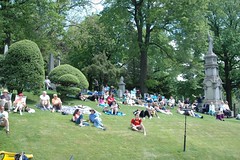


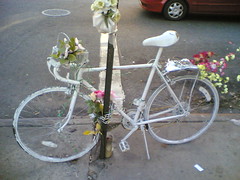
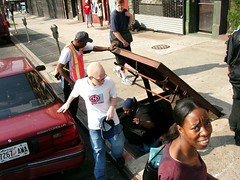
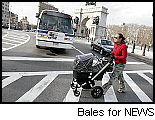 Elizabeth Hays writes in the Daily News
Elizabeth Hays writes in the Daily News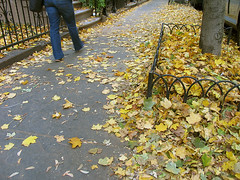
 “In Northern European cities, you see bollards all over the place. They are used to make sure that if a motor vehicle accidentally jumps up on to a sidewalk, pedestrians are protected. Bollards are a kind of urban preventative medicine. They stop crashes before they happen.”
“In Northern European cities, you see bollards all over the place. They are used to make sure that if a motor vehicle accidentally jumps up on to a sidewalk, pedestrians are protected. Bollards are a kind of urban preventative medicine. They stop crashes before they happen.” “This sad state of affairs on NYC’s streets is slowly beginning to change. Last year, a group of Park Slope advocates, myself included, teamed up with the Prospect Heights Parents Association and Transportation Alternatives and successfully lobbied DOT to install protective bollards around the intimidating traffic island in the middle of Flatbush Avenue between Prospect Park and the Brooklyn Public Library.
“This sad state of affairs on NYC’s streets is slowly beginning to change. Last year, a group of Park Slope advocates, myself included, teamed up with the Prospect Heights Parents Association and Transportation Alternatives and successfully lobbied DOT to install protective bollards around the intimidating traffic island in the middle of Flatbush Avenue between Prospect Park and the Brooklyn Public Library.